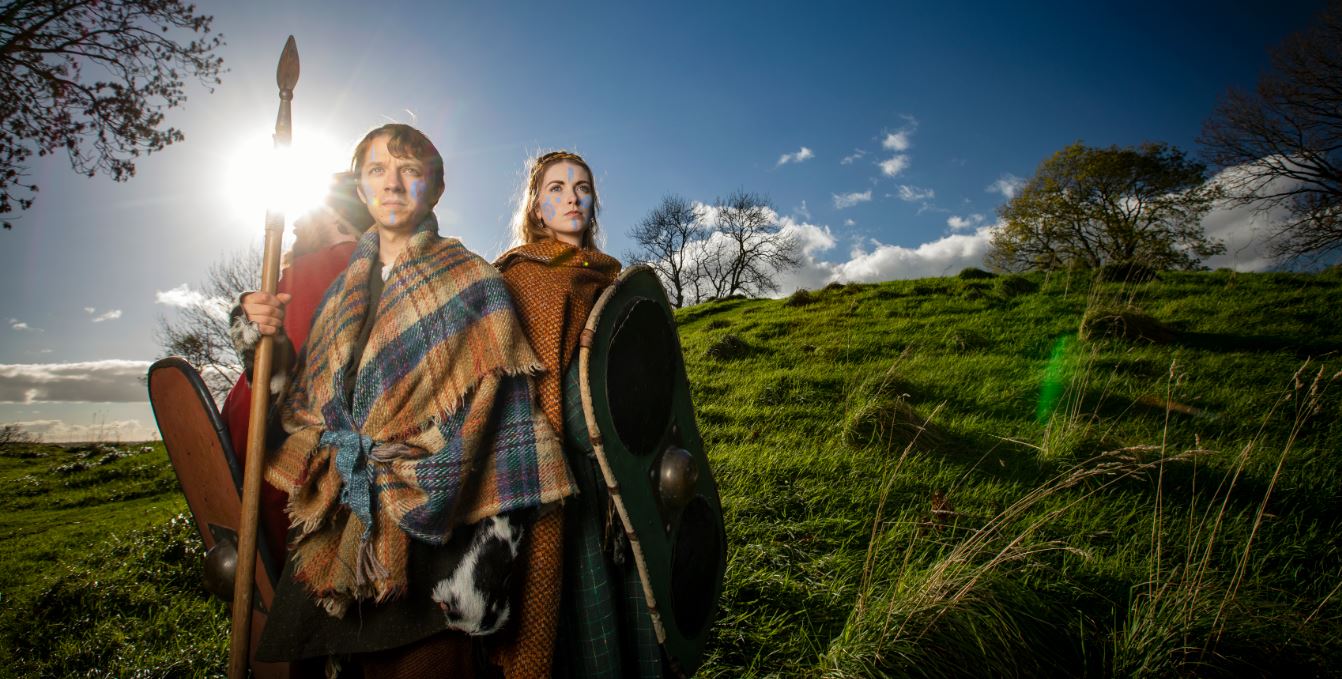QUEEN’S RESEARCH UNVEILS EARLY KINGS OF ULSTER AND IRON AGE TEMPLES AT NAVAN FORT 
20 July 2020
Academics from Queen’s and the University of Aberdeen have uncovered evidence for a series of monumental temple complexes of the Iron Age, as well as residences of early kings of Ulster from the medieval period, at Navan Fort.
The research was conducted in the form of a geophysical survey, led by Dr Patrick Gleeson, Senior Lecturer in Archaeology at the School of Natural and Built Environment at Queen’s and his team of colleagues from the University of Aberdeen and German Archaeological Institute, Frankfurt. The survey will be published in the Oxford Journal of Archaeology.
The results are the initial work of an on-going programme that adds rich discoveries to the iconic site of Navan Fort. The sighting evidences a vast temple complex and ceremonial centre of prehistoric Europe, as well as the first evidence of continued medieval activity during the period when Navan Fort was associated with the kingship of Ulster.
It is one of Ireland’s so-called royal sites, a group of five ceremonial centres of prehistoric origin, documented in the medieval period as the capitals of the five fifths that divided Ireland.
The work is part of the Comparative Kingship project, funded by the Leverhulme Trust, and is being supported by Historic Environment Division of the Department of Communities Northern Ireland who own the site as a monument in State Care.
Talking about the survey, Dr Gleeson said:
“Excavation in the 1960s uncovered one of the most spectacular series of buildings of any region of prehistoric Europe, including a series of figure-of-8 buildings of the Early Iron Age and a 40m timber-ringed structure constructed c.95 BC.
“Upon the latter’s construction, it was immediately filled with stones and burnt to the ground in order to create a massive mound that now dominates the site.
“Our discoveries add significant additional data, hinting that the buildings uncovered in the 1960s were not domestic structures lived in by kings, but a series of massive temples, some of the largest and most complex ritual arena of any region of later prehistoric and pre-Roman Northern Europe.”
Dr John O’Keeffe, Principal Inspector of Historic Monuments in the Department for Communities, said:
“We were pleased to facilitate the survey work at Navan Fort, which is owned by the Department for Communities and is one of 190 State Care Monuments in Northern Ireland managed by the Department for Communities.
“The work has shone new light on the monument, and will inform further research as we explore what Navan Fort meant to our forebears and how they used the site, for years to come. It provides additional insights that inform visits to this enigmatic monument and landscape today.”
In addition to identifying the residences of early medieval kings of Ulster, activity at Navan Fort is contemporary with the foundation of Armagh by St Patrick only 1km to the east. Some of the buildings uncovered are likely to be identifiable with the house built by Níall ÓG Ua Neill for all the poets of Ireland in 1387. Evidence for the continuity of activity at Navan after the coming of Christianity and foundation of Armagh, the primatial see of the Church in Ireland, is particularly significant.
Navan Fort is one of Ireland’s most ancient landscapes because it is the seat of legendary kings like Chonchobhar mac Nessa and provides the backdrop to the exploits of warriors like Cú Chulainn, Conal Cernach and others in the great epic saga Táin Bó Cúailnge, or The Cattle Raid of Cooley.
Full details of this latest research can be read in the Oxford Journal of Archaeology via the Wiley Online Library.
Media enquiries to Sarah Beveridge at Queen's Communications Office on telephone: 07795 353874.
Image credits (headline & main): Courtesy of Armagh City, Banbridge and Craigavon Borough Council & The Navan Centre & Fort
Back to Main News
Top of Page